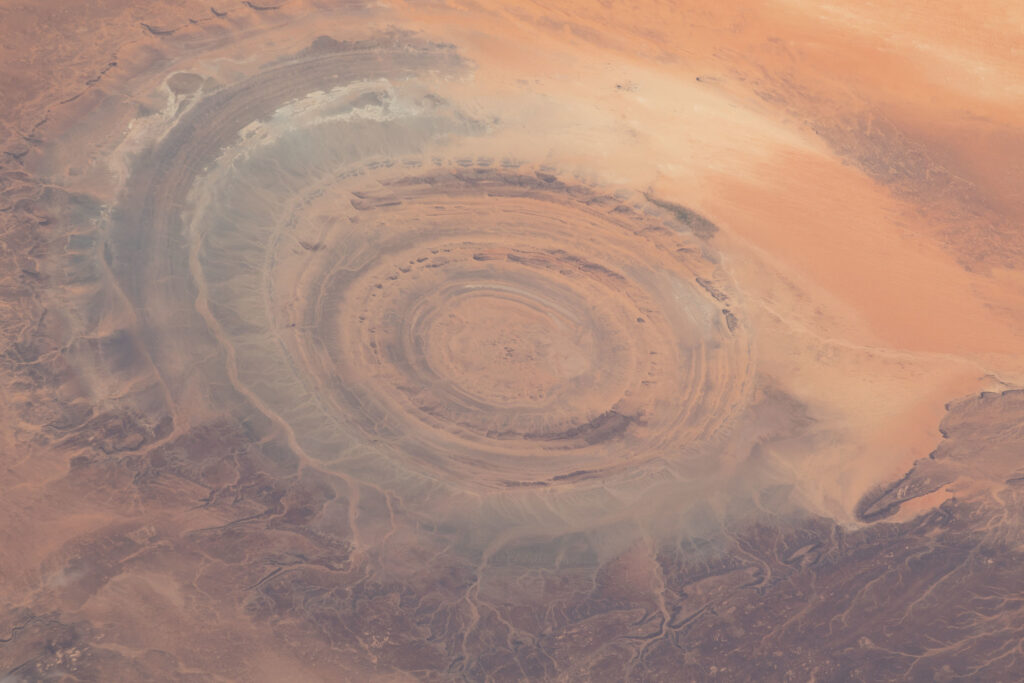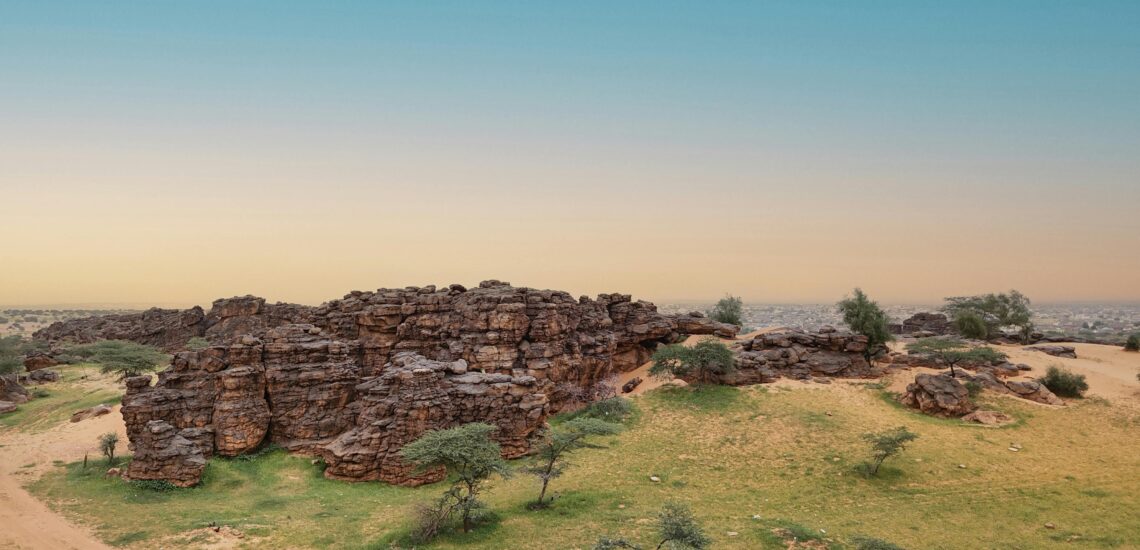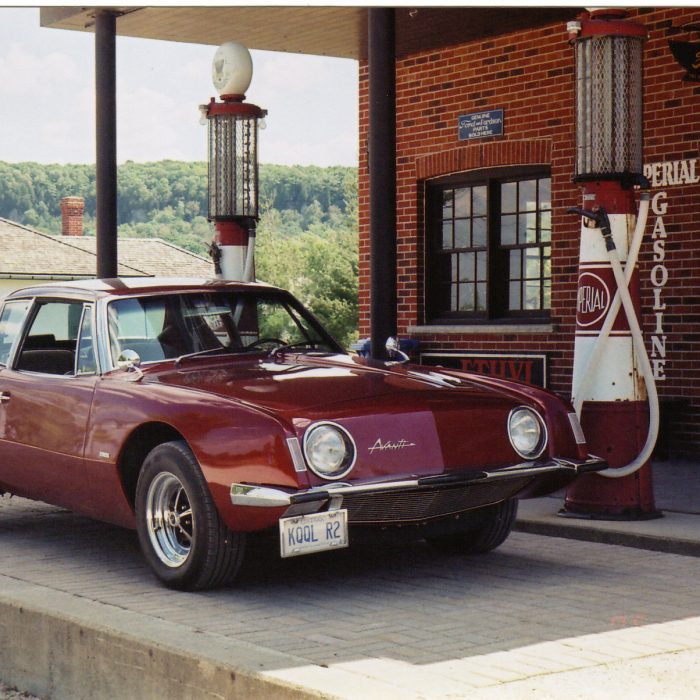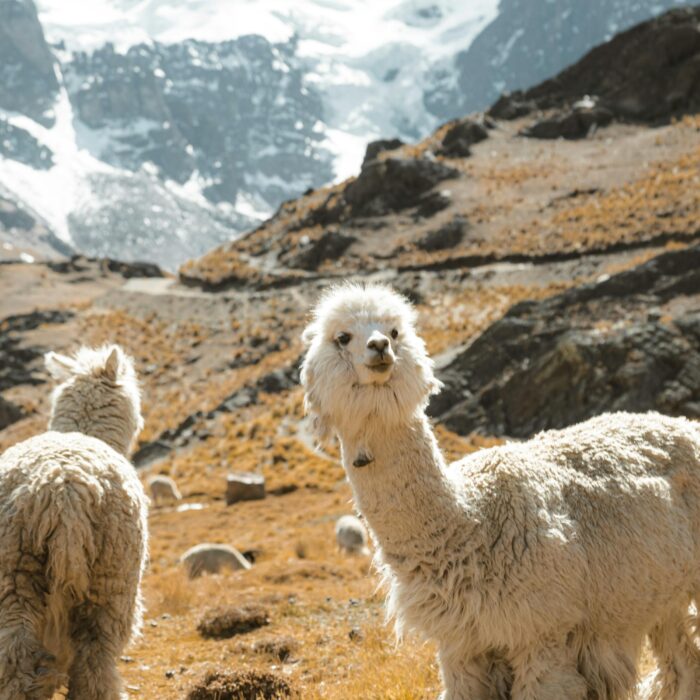Quick facts about Mauritania:
- Population: Approximately 4.9 million people.
- Capital: Nouakchott.
- Official Language: Arabic.
- Other Languages: Pulaar, Soninke, Wolof, and French.
- Currency: Mauritanian ouguiya (MRU).
- Government: Islamic republic.
- Major Religion: Islam (Sunni Islam is the state religion).
- Geography: Located in northwest Africa, bordered by the Atlantic Ocean to the west, Western Sahara to the northwest, Algeria to the northeast, Mali to the east and southeast, and Senegal to the southwest. The country consists mainly of desert landscapes, as it is largely within the Sahara.
Fact 1: Mauritania is predominantly just deserts
Approximately 90% of its land area falls within the Sahara Desert, making it one of the most arid countries in the world. The northern and central parts of Mauritania are especially desolate, with vast stretches of sand dunes, rocky plateaus, and limited vegetation, characteristic of the Saharan climate.
In the southern regions, closer to the Senegal River, the landscape is slightly more varied and supports some agriculture, but the desert continues to encroach further south each year due to desertification. This environmental challenge affects local communities, livestock, and agricultural productivity, with severe impacts on food security.

Fact 2: Mauritania is the last country to ban slavery
Mauritania was the last country to formally abolish slavery, doing so only in 1981, and it was the last to criminalize it in 2007. Despite these legal changes, slavery-like practices persist in some areas, particularly in the form of hereditary bondage where people from the Haratin ethnic group often serve wealthier families, especially those with lighter skin.
Estimates of the number of people affected vary significantly, with some organizations suggesting that tens of thousands remain in de facto slavery conditions in rural areas, though reliable statistics are difficult to obtain due to the hidden nature of the practice.
Fact 3: Mauritania was historically part of the route of the famous Dakar Rally
This renowned off-road endurance race, originally known as the Paris-Dakar Rally, started in Paris and crossed through several African countries, including Mauritania, before ending in Dakar, Senegal. Mauritania’s vast, challenging desert landscapes made it a key section for the rally, adding a unique and difficult stage to the event with its vast dunes and remote, rugged terrain.
However, due to security concerns, including threats from terrorist groups in the region, the rally’s route was shifted in 2009 to South America and later to Saudi Arabia, where it continues today.
Note: If you visit the country and want to repeat the rally route, check beforehand if you need an International Driving Permit in Mauritania to drive a car.

Fact 4: In Mauritania, poverty and malnutrition are widespread among part of the population
Around 28.2% of Mauritanians live below the national poverty line, with many in remote areas facing limited access to food, healthcare, and basic infrastructure. Malnutrition is particularly troubling among children, with around 20% of children under five experiencing stunting (low height for age), a sign of chronic undernutrition. The factors contributing to this situation include a harsh desert climate that limits agricultural production, economic dependence on mining rather than food production, and recurrent droughts.
Fact 5: Here is the Eye of the Sahara, visible even from space
Richat Structure is a fascinating natural formation in Mauritania. Located in the Sahara Desert near the town of Ouadane, this enormous circular geological structure spans about 40 kilometers (25 miles) across. It resembles a large “eye” when viewed from above, making it visible from space and a notable feature for astronauts. Initially thought to be an impact crater, scientists now believe it formed due to natural geological uplift and erosion over millions of years.

Fact 6: It is home to the largest ship graveyard in the world
Mauritania was home to one of the largest ship graveyards in the world, located in the port city of Nouadhibou. Over several decades, hundreds of ships were abandoned there, creating a vast “ship graveyard.” This happened largely due to lax regulations and economic challenges, as ship owners found it easier and cheaper to abandon their vessels here than to properly dispose of or repurpose them. These ships, ranging from fishing boats to large cargo vessels, became a prominent sight in Nouadhibou’s bay. Although some efforts have been made to clean up the area in recent years, remnants of the graveyard are still visible, marking an unusual and eerie landscape along Mauritania’s coast.
Fact 7: In Mauritania, you can visit ancient cities in the old trade routes of Africa
In Mauritania, you can explore ancient cities that were once key points on historic trans-Saharan trade routes. Notable among them are Chinguetti, Ouadane, Tichitt, and Oualata. These cities, founded between the 11th and 16th centuries, were vibrant centers of trade, scholarship, and Islamic learning. They served as crucial stops for traders moving goods like salt, gold, and textiles across Africa.
Chinguetti, in particular, is known for its ancient libraries, which house manuscripts on Islamic law, science, and literature, preserving the intellectual legacy of these early trade networks. Many of these cities retain their medieval architecture, with structures built from stone and clay, and have been designated UNESCO World Heritage Sites as part of the “Ancient Ksour of Ouadane, Chinguetti, Tichitt, and Oualata” listing, providing a glimpse into the region’s rich past.

Fact 8: Oil and large gas reserves found in Mauritania
Mauritania is endowed with significant natural resources, including large oil and natural gas reserves. Offshore oil was discovered in the early 2000s, leading to production at the Chinguetti oil field in 2006, though this field has faced challenges with declining output over time. More recently, a substantial offshore natural gas field was discovered in 2015 at the Greater Tortue Ahmeyim (GTA) site, located on the maritime border between Mauritania and Senegal. This field, one of the largest gas finds in the region, holds an estimated 15 trillion cubic feet of recoverable gas reserves.
Fact 9: You can see the longest train in Mauritania
In Mauritania, you can witness the famous Mauritania Railway, which operates one of the longest trains in the world. Stretching up to 2.5 kilometers (1.5 miles), this freight train carries iron ore from the mines in Zouérat to the port of Nouadhibou on the Atlantic coast. The train typically comprises over 200 cars, loaded with ore, and can weigh as much as 20,000 tons.
This railway is not only an engineering marvel but also a critical part of Mauritania’s economy, as iron ore is one of the country’s main exports. The train serves as a vital transportation link across the vast desert landscape and, impressively, some passengers ride atop the ore-filled cars for a free, though dusty, journey across the Sahara.

Fact 10: Mauritania has one of the best birdwatching spots in the world
Mauritania is home to one of the best birdwatching spots in the world, particularly in the Banc d’Arguin National Park, a UNESCO World Heritage site. Located along the Atlantic coast, this park is a key habitat for migratory birds, making it a paradise for birdwatching enthusiasts.
The park is famous for its vast mudflats, sandbanks, and salt flats, which attract a wide variety of bird species, including thousands of migratory shorebirds, waterfowl, and seabirds. It is particularly known for hosting large populations of flamingos, pelicans, and various species of waders and terns. The park’s diverse ecosystems, from wetlands to coastal dunes, provide critical stopover points for birds migrating along the West African coastline.

Published November 10, 2024 • 6m to read





